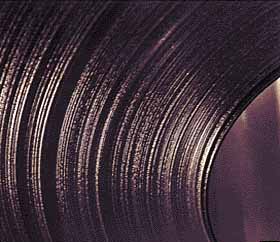Secondary Finishing: Process Description
|
Courtesy of the Gas Research Institute |
Equipment
Combustion Technology
Energy Consumption
Process Description
R&D Trends
Secondary finishing includes all of the steps required to convert the semifinished shapes to the final products offered for sale. These steps include some or all of the following steps: reheating, surface conditioning, hot rolling, cold rolling, heat treating, surface coating, cooling, cutting, coiling, sizing, etc. Heat treating and surface coating are discussed separately.Plate, Sheet, and Strip Mills
Nearly 60% of steel products come from plate, sheet, and strip mills. All processes begin with slab reheating to rolling temperature – with an increasing share being hot charged as part of a thin slab casting/direct rolling process. Plate mills generally have one roughing stand and one finishing stand (both reversing mills) with a final leveler. Sheet mills generally have continuous roughing and finishing stands that reduce the section of the slab to about 1/10″. The sheet is cooled and coiled and then fed to pickling tanks to remove surface oxidation. Some sheet is fed to cold reduction mills that reduce the 1/10″ hot rolled sheet to 0.03″ sheet. The cold rolled coils are annealed and then passed to a final temper mill. Many sheet products are coated, the description of these coating processes is provided in the next process section.
Welded Pipe and Tubing
Coils of skelp (steel sheet or plate from which welded pipe and tubing is made) from a sheet rolling process are uncoiled and welded together to form a continuous feed. The skelp makes several loops through a continuous reheating furnace before it is formed into pipe and seam welded. The pipe is then further rolled on a sizing mill before cutting, cooling, testing, and shipping.
Structural and Bar Mills
In structural mills, steel blooms or billets are brought to uniform temperature in continuous reheat furnaces and then passed through roughing, intermediate, and finishing mills to produce the desired shapes: I Beam, channel, angle, zee. Bar mills start with continuous billet reheaters followed by roughing and finishing stands. Some product is coiled and the other is finished and cut into straight lengths.
Rod and Wire Mills
Rod mills are similar to bar mills having continuous billet reheating, roughing, and intermediate stands. The rod mill has multiple finishing sections where rods down to 1/4″ are coiled at the rate of 8,500 feet per minute. In wire mills, coils of rod are cleaned, coated with a lubricant and baked, and then drawn on a continuous wire drawing frame. Wire can also be annealed and coated depending on the intended use.
Seamless and Specialty Tubing
Cut billet rounds are heated, often in a rotary hearth and then pierced by a center die, followed by hot extruding to the desired pipe diameter and wall thickness. These pipe sections can also be cold worked by cold drawing or tube reducing.
Specialty Products
Stainless steel, tool steels, and large forgings have their own unique process steps. These processes are more likely to use batch furnaces due to small volume and changing shape requirements.

